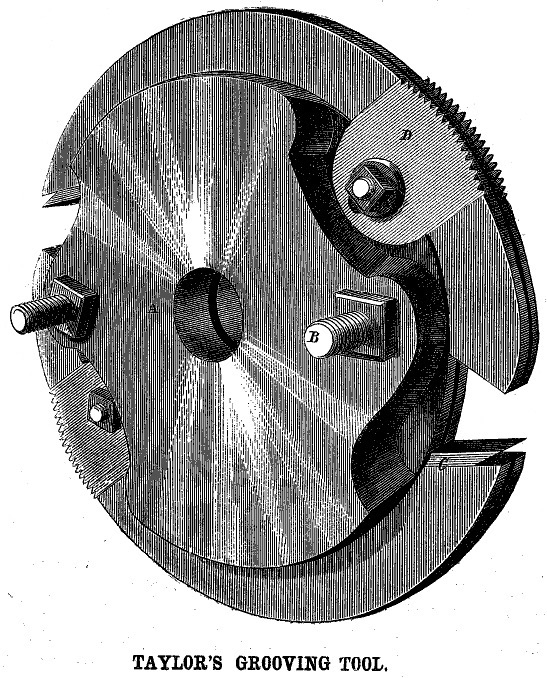 |
| From article in 1866-03-10 Scientific American |
In 1861 John L. Taylor patented a grooving (dadoing) head. He manufactured his dado head and sold it through New York machinery retailer S. C. Hills under the name J. L. Taylor.
Information Sources
- 1861-11-02 Scientific American.
RECENT AIVIERICAN INVENTIONS.
Tool for Cutting Grooves—J. L. Taylor, of New York city, is the patentee of this invention, which is designed to attain a tool or implement for superseding the ordinary manipulation of plowing or cutting rectangular grooves in boards, planks, &c., which are necessary in erecting shelving and for various other purposes in joinery. The invention consists in the employment or use of two circular plates placed on a suitable mandrel, having serrated or fleam-toothed cutters attached, and chisel-shaped cutters fitted between the two plates, whereby the desired end is attained.
- 1861 New York City Directory lists "Taylor, John L. 68 West 13th st., Builder". The 1862 and 1863 editions list the same address and give his occupation as Harbormaster.
- 1866-03-10 Scientific American.
Improved Grooving Tool.—The ordinary method of making grooves in carpenter work is to use a peculiar kind of plane, called a plow, and run them oat by hand. This operation is slow and laborious. A much better way of doing it is to employ a tool for the purpose, thereby accomplishing the work much better and in much less time. Such a tool is here illustrated. It is a simple combination of parts to effect the object; being merely two plates, A, connected by bolts, B, and having cutters, C, between. These cutters can be of any desired width or shape, and may be used for sticking sash beads or molding for other purposes. In connection with them are the toothed cutters, D. These line up the track of the cutting tools, so that the edges are made neat and clean, and the chisels prevented from binding in the groove, or making rough work. All the parts are capable ot accurate and minute adjustment, and the stuff may be run either under or over it. It is a very useful implement, and was patented through the Scientific American Patent Agency, Oct. 15, 1861, by J. L. Taylor. For further information address patentee, No. 66 West Thirteenth street. S. C. Hills, No. 12 Platt street, sells the implement.